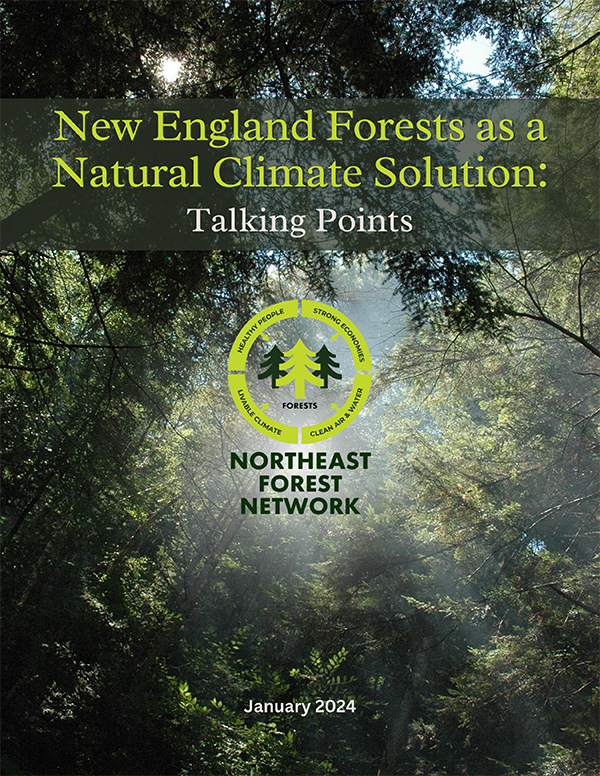At their November 3, 2021, meeting, Northeast Forest Network (NFN) members expressed unanimous support for promoting all five separate but complementary pathways for increasing the climate benefit of New England’s Forests described in the then soon-to-be-released report, New England’s Climate Imperative: Our Forests as a Natural Climate Solution (Meyer et al. 2022). Network members learned New England forests already absorb 14% of CO2 emissions. That number could increase to 21% of current emissions by 2050 by adopting these five pathways: avoided deforestation, wildland reserves, improved forest management, mass timber construction, and urban and suburban forests.
Later in 2023, after the public release of the Forests as a Natural Climate Solution report, Highstead worked with marketing consultant Water Words That Work and one of the report’s principal co-authors, Kavita Kapur Macleod, to develop a set of talking points that would help NFN members advance calls to action involving one or more pathways. The talking points within refer to the potential impacts of each of the five pathways, not only for the region as a whole but also by state (unavailable in the 2022 report). Furthermore, this set of talking points uses more accessible language and units of measure, including cars removed from the road, than were described in the Climate Imperative report. For the full breakdown of the calculations used for these talking points, please click here to view the spreadsheet.
NFN members hope the talking points and calculations spreadsheet will help anyone seeking to make a more compelling case for why we need to keep forests as forests, designate more wildland reserves, normalize climate-informed forest management, build more buildings with wood, and better care for and protect our urban and suburban trees and forests from development.
